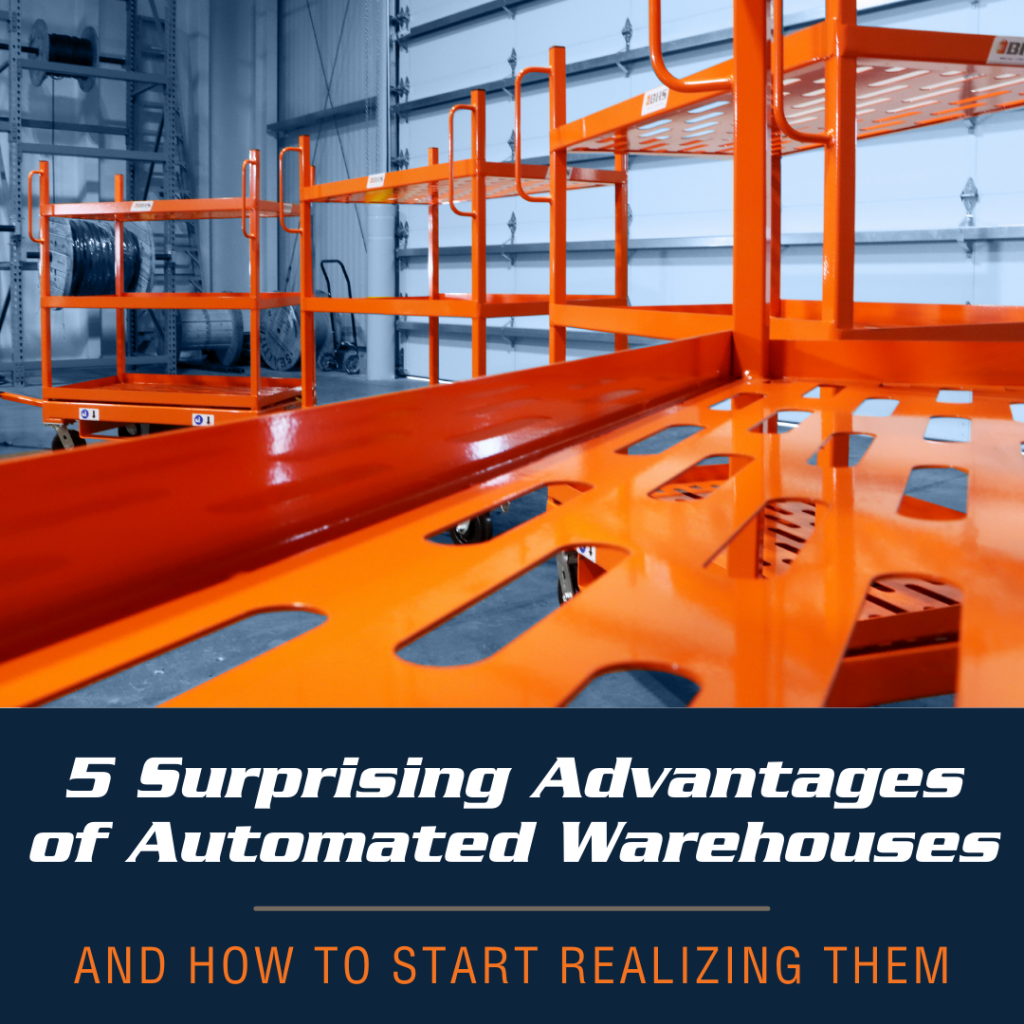We use cookies to make your experience better. To comply with the new e-Privacy directive, we need to ask for your consent to set the cookies. Learn more.
5 Surprising Advantages of Automated Warehouses—and How to Start Realizing Them
The broad advantages of automated warehouses are well-known. Automation cuts costs. It improves efficiency. It boosts productivity and accuracy and even sustainability. But what does that all mean to the DC manager looking to fill accelerating orders during a labor shortage? The view from 30,000 feet up is nice, but it’s not helpful when your challenges are up-close and highly specific. In short, the best automation solution is the one that provides the exact benefit your warehouse needs.

For today’s post, we’ll focus on a few specific and lesser-known advantages of warehouse automation. The systems we’ll discuss are available today, and you can implement them in your existing facilities at your own pace, one at a time. (Read more about this step-by-step approach to automation here.) Here are a few examples of how automation can help with some distinct warehouse challenges.
1. Mobile material handling automation provides scalability to match seasonal shifts in volume.
Discussion of automated guided vehicles (AGVs) and self-driving forklifts tend to focus on the productivity benefits, and those can be significant. But perhaps the greatest benefit of automating material transportation is the scalability. Choose AGVs with sufficient tow capacity to pull material handling trailers and you can adjust carrying capacity to match demand simply by adding or subtracting carts. (Learn more about how Warehouse Trailers support material handling automation here.)
The Industrial Trailer from BHS features a tow bar you can lock vertically against the frame, instantly converting it into a high-capacity order picking cart; during particularly slow seasons, workers can revert to manual use. Then, when you need to speed up material flow, you can break out the AGVs and go fully automated.
2. Warehouse pallet automation systems reduce facility space requirements, getting more value out of every square foot.
The e-commerce boom is forcing every logistics provider to do more with less—and that includes more storage without extra space. Traditional pallet storage requires wide aisles for forklift access. Deep-lane pallet storage systems incorporate a simple pallet shuttle to move loads forward on demand. This allows forklifts to access pallets from a single point of entry, reducing aisle-size requirements significantly.
In more semi-automated scenarios, Pallet Carousel & Skid Positioners allow workers to rotate pallets, giving them 360-degree access from a single position. Not only does this significantly improve ergonomics, it can reduce space requirements for palletizing stations.
3. Goods-to-person automation reduces the risk of work-related musculoskeletal disorders.
In 2019, laborers and freight, stock, and material movers—the frontline workers in the warehousing industry—had more injuries requiring days away from work than any other private industry. Many of these injuries were musculoskeletal disorders (MSDs), or “ergonomic injuries,” associated with overuse of muscles and soft tissues. In fact, these same jobs led to more work-related MSDs than any other occupation in 2018.
Because MSDs are related to repetitive motion and overexertion, the key to reducing them is to reduce the physical requirements on workers—less walking, bending, lifting, and twisting. Goods-to-person automation solutions help to cut down on these risk factors. The system could be as simple as an automated conveyor or as complex as a full automated storage and retrieval system (AS/RS). They may include AGVs and trailers. When you use automation to move goods throughout the facility, you can help limit the risk of MSDs for staff.
4. Digital process automation frees expert staff to focus on innovation and growth.
So far, we’ve only discussed material handling automation—but that’s only half the picture. Software automation can remove data-handling tasks from inventory management to reporting to workflow organization. These digital process tools automate tasks that typically fall on managers and back-office staff. When these experts don’t have to spend all day compiling reports, manually copying data between systems, and managing workflow between employees, they have more time to focus on higher-level work—reaching more clients, identifying potential improvements, and finding new avenues for business growth.
5. Automated decision-making in the battery room achieves optimal battery usage, maintenance, and rotation.
We think of automation as applying only to tasks, but system management software can also help with decision-making—and that has particular advantages in forklift battery rooms. When it’s time for a battery change, forklift operators may simply choose the nearest, or they may have a favorite. That leads to uneven battery rotation. Some batteries may get overused, while others are neglected. Even worse, operators may choose batteries that aren’t fully charged, or that haven’t completed the cooling cycle. All of this adds up to lower battery lives and higher costs.
An automated battery fleet management system like BHS Fleet Tracker removes the guesswork. It tracks battery rotation and tells the operator which battery to choose, all through a lightweight touchscreen tablet mounted on any side-extraction Battery Extractor. Fleet Tracker also provides maintenance prompts to keep all batteries washed, watered, and equalized according to schedule. The system also tracks usage data, providing real-time snapshots of total system health as well as in-depth reporting; managers can access all this through the cloud-based IIoT Web Portal.
These are just a few examples of the benefits, but they clearly show that the advantages of automated warehouses go far beyond bottom-line cost considerations. Contact the BHS sales team at 1.800.BHS.9500 to learn more about the role of material handling equipment in warehouse automation.
